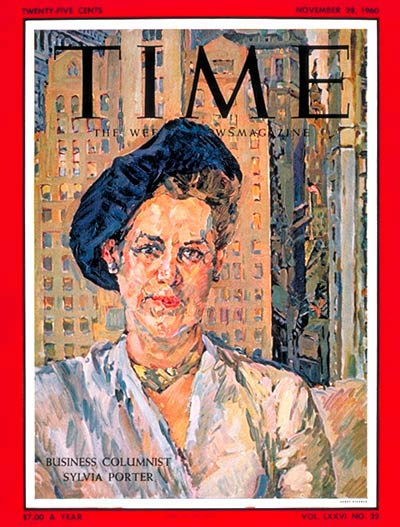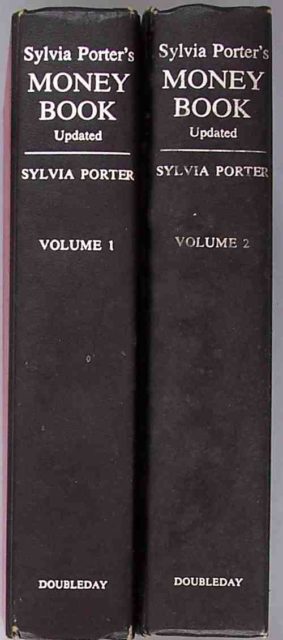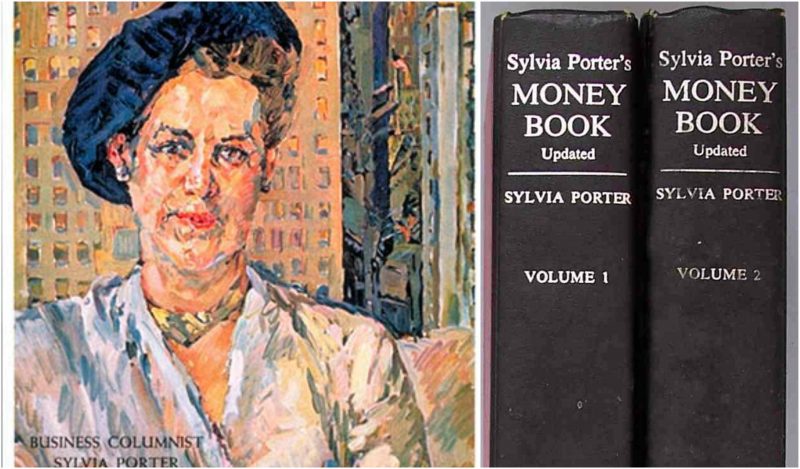Sylvia Feldman Porter, an eminent economist, columnist, and best-selling author, was the first woman to sit behind the financial desk of a top American newspaper and the first woman to write about finance for a national readership, and she did it in a way that helped educate the American public significantly about money matters.
She was born on June 18, 1913, in Patchogue, New York, the only daughter in a middle-class family of Russian Jewish immigrants. Her father died while she was still young, leaving her resourceful mother to struggle to provide a future for her children, working different jobs. She insisted that Sylvia be well-educated and prepare herself for a career. After skipping the sixth grade, Sylvia graduated from James Madison High School at age 16. Her young age prevented her from getting a scholarship at Cornell University, so she enrolled at then-tuition-free Hunter College in Manhattan as an English and history major.
The turning point in Sylvia’s life was the stock market crash in 1929. The Field family was hit with the mother losing an investment of $30,000. Shocked by the sudden financial instability, Sylvia was determined to understand what had happened, so she changed her major to economics. In 1932, she earned a magna cum laude bachelor’s degree and a Phi Beta Kappa. She then married Reed R. Porter, a bank employee. At the time, Sylvia Porter wasn’t economically independent because, as a woman, she was unable to find a job in finance, and the Depression compounded the problem. She finally managed to find an apprenticeship at an investment counseling firm, and acquired broad financial experience, augmenting what she learned with business courses at New York University.
Q: Who was the well-known finance columnist and author?
A: Sylvia Porter, June 18, 1913 (1991) pic.twitter.com/9VsutB4AzV
— Karen Kondazian (@KarenKondazian1) June 18, 2016
Despite Sylvia’s pursuit of a career in finance, the fact that she was a female hindered her efforts in the male dominated world of business. Sylvia and her superiors were highly aware that her gender would be a big challenge for the financiers, considering the traditional female roles. Women made excellent typists, secretaries, clerks, and assistants, whereas becoming a financial expert was completely out of the question. But in 1934, using the byline “S. F. Porter,” disguising her gender, she began to write a newsletter focused completely on U.S. government bonds. At the same time, she managed to persuade the New York Post to hire her to write a financial column published three times a week.
Sylvia Porter, American Economist and Journalist, born 18th June 1913 https://t.co/q8cLRyyZK7 pic.twitter.com/klXCAMKsDq
— HistoryWoman (@HelenRBarton) June 18, 2016
Initially, the New York Evening Post hired her because the managing editor found it amusing to have a woman working on financial stories. However, her expertise and professionalism were soon recognized by the readers, who turned to Porter’s articles because they spoke of complex economic issues and injustices in a clear and easy to understand manner. She then launched a column for American Banker, the industry daily, underling her growing reputation.
In 1938, she obtained the position of a financial editor at the Post and began to write a daily column, “S.F. Porter Says.”
The Post realized that her gender was actually an asset so on July 15th, 1942, editors changed her byline to “Sylvia F. Porter” and further revealed her identity by adding her photograph to the column. It was a significant day for Porter, as she reflected in an interview for New Women in Social Science: “ On that day I became a woman.”

The revelation that S.F. Porter was actually a woman brought more requests for lectures and columns in other magazines and her professional renown continued to grow. In 1944, Porter founded a weekly newsletter for the banking and security community, “Reporting on Government,” and in 1947, her column became nationally syndicated. Soon after, she published a number of comprehensive guidebooks on personal finance, including “How to Live Within Your Income,” “Managing Your Money,” and “Money and You,” by which she educated the public about investments and financial management. She devoted much of her work to eliminating the “bafflegab” – the term she coined for the cryptic terminology of finance and government. Regarding her work and legacy, she stated in an interview: “I like to think I’ve contributed in some way to the increasing willingness of the American public to take on the responsibilities of the economy.”
https://t.co/WpGRTerYCA Sylvia Porter’s Money Book by Sylvia Porter (1976, Paperback) https://t.co/3iEAtliSyX pic.twitter.com/b3hQtSlyz2
— Petey Sacks (@petey_sacks) December 8, 2015
Porter was the first who said that women had a responsibility to understand and enjoy money. Before her time, the economists and financiers assumed that money was too complicated for women and they didn’t need to know the practice of money management and should leave it to men.

Over the next two decades, Porter published more books that helped the American consumer navigate the world of financial choices: Sylvia Porter’s Money Book: How to Earn It, Spend It, Save It, Invest It, Borrow It, and Use It to Better Your Life, a best-seller in 1975 at more than 1 million copies; and Sylvia Porter’s New Money Book for the Eighties: How to Beat the High Cost of Living—And Use Your Earnings, Credit, Savings, and Investments to Better Your Life, also a best-seller. Her Sylvia Porter’s Income Tax Guide appeared annually, from 1960 until her death in 1991.
After more than three decades of writing for the Post, in 1978, Porter’s column moved to the New York Daily News. Through the Field Newspaper Syndicate, It appeared in 450 newspapers around the world and reached 40 million readers.
Sylvia Field Porter helped change traditionally held ideas of what a woman could do by breaking into the male-dominated world of finance and by doing so very successfully. She managed to reach both financiers and laypersons who utilized her expert advice on money matters and by doing so she became one of America’s most influential women.
